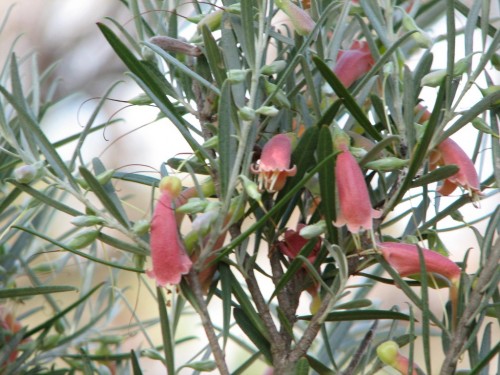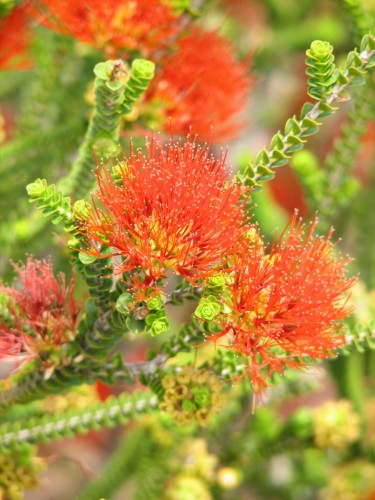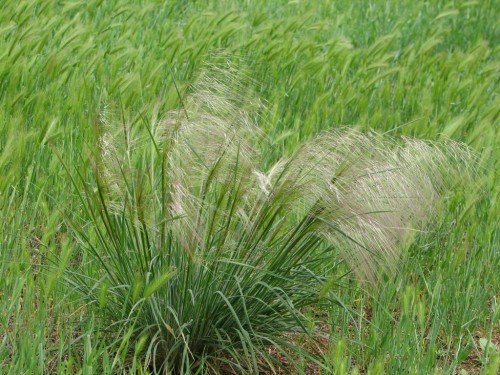Drought Proofing Our Gardens 1
How do we drought proof our gardens? How do we manage the plants we have so that they can remain reasonable looking in a time where water restrictions make it difficult?
There are some actions that I want to take over these next few weeks with my own plants.
Beaufortia squarrosa ( Sand Bottlebrush)
Beaufortias need particularly good drainage. They are drought tolerant as we proved with this plant. It rarely received water other than the natural rainfall during winter and early spring, totalling 340mm (13 inches). Beaufortias are restricted to Western Australia and most are in the south west. Years ago when we were touring in the south west I remember seeing these brilliant ‘flames’ along the side of the road. I am not sure which species it was but sights similar to this photo were what we were seeing.
We must have some 35mm slides of this species. I must get the scanner going.
Lasiopetalum baueri (Slender Velvet Bush)
The plant in the photo (two plants in fact) were pushed out because of the development taking place. This patch was suppose to be saved.
Lasiopetalum baueri is a pretty plant when in flower and attractive anyway because of the overall rusty appearance caused by the dense hairs on the stems. It is drought tolerant and hardy to most frosts. It puts on its flower display in spring and responds well to light pruning after flowering. It would make a good hedge or low screen plant. The one I have in the garden is a rounded shrub because of the tip pruning that I do to take cuttings
Rescuing Eremophilas
Plants that have been there for many years went today. We attempted to move a dozen of them by chopping the tops back hard and getting them into the ground again quickly. I have been using the chopped material to take cuttings. The trouble is that some of these have the reputation for being difficult to strike. That is why they were planted there in the first place. It was an attempt to conserve the plants at a time when it was not popular and arboretums were only just beginning to be seen as a place to conserve plants.
The photo is of an Eremophila (emu bush) which has probably gone now. No one seemed to know for sure whether it would be in the way or not. I am not sure of the name of this species. Some homework for me.
Austrostipa Species
I intend to master this book as I would like to be able to go further than say ‘that is an Austrostipa’.
I still have not found a suitable species to use as a native grass lawn. Our naturally low rain fall is the problem. There is no point in trying to establish something that uses as much water as some of the lawn grasses available. I have heard that there will possibly be a need to run a sprinkler once a month to keep the lawn looking like a lawn in the summer. That is a a problem in a particularly dry year as we are having. I guess the decision has to be made about whether we want to have a green patch or not. What would be the purpose of a native grass lawn?
More information on Australian Native Grasses may be found here.




